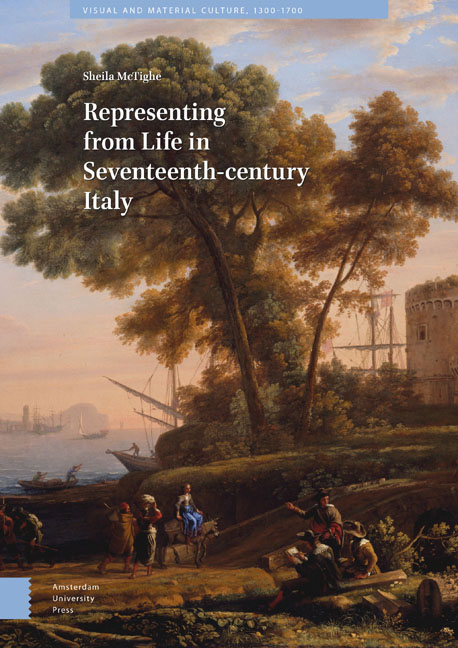Book contents
- Frontmatter
- Acknowledgements
- Contents
- Illustration List
- Introduction: Depicting from Life
- 1 Caravaggio’s Physiognomy
- 2 Jacques Callot, Drawing Dal Vivo around 1620: Commerce in Florence, Piracy on the High Seas
- 3 Jacques Callot’s Capricci di varie figure (1617): The Allusive Imagery of the Everyday, Represented ‘from Life’ and Emulating a Text
- 4 The Motif of the Shooting Man, and Capturing the Urban Scene: Claude Lorrain and the Bamboccianti
- 5 The Absent Eyewitness: the Revolt of Masaniello and Depiction Dal Vivo in the Middle of the Seventeenth Century
- Conclusion
- Index
3 - Jacques Callot’s Capricci di varie figure (1617): The Allusive Imagery of the Everyday, Represented ‘from Life’ and Emulating a Text
Published online by Cambridge University Press: 21 November 2020
- Frontmatter
- Acknowledgements
- Contents
- Illustration List
- Introduction: Depicting from Life
- 1 Caravaggio’s Physiognomy
- 2 Jacques Callot, Drawing Dal Vivo around 1620: Commerce in Florence, Piracy on the High Seas
- 3 Jacques Callot’s Capricci di varie figure (1617): The Allusive Imagery of the Everyday, Represented ‘from Life’ and Emulating a Text
- 4 The Motif of the Shooting Man, and Capturing the Urban Scene: Claude Lorrain and the Bamboccianti
- 5 The Absent Eyewitness: the Revolt of Masaniello and Depiction Dal Vivo in the Middle of the Seventeenth Century
- Conclusion
- Index
Summary
Abstract
Callot's mentor at the Medici court, the impresario and engineer Giulio Parigi, insisted that he learn how to draw figures dal vivo. The series of fifty small etchings called Capricci that Callot produced in 1617 were a gift for a young prince, Lorenzo di Ferdinando I de’ Medici. Were they a kind of draftsman's manual, as Callot's biographer Felibien later suggested? Study of their sequence and subjects within their original bound format shows that Callot likened his prints to the genre of ‘mirrors of princes’, modelled on Erasmus's Education of a Christian Prince. Callot put together his series of images made from life so that they would unfold like a text, turning the etchings into a witty address to a ne’er-do-well prince.
Keywords: speculum principium, caprices, Sébastien Stoskopff, Stradanus, prints of festivities
If one speaks of their usefulness for educating those who love them, or for forming the mind of a young Prince, it is certain that Prints, well chosen and well arranged, pleasantly give knowledge not only of the Sciences, and of all the beaux Arts, but of all things imaginable.
—Abbé Michel de Marolles (1600-1691),preface to the catalogue of his print collection, Paris,1666
In Italy during the early seventeenth century, the practice of drawing and painting from life nearly always raised issues of artistic originality, seen in opposition to the repetitive copying of nature or past art. The interplay of vivid naturalism, overt allusions to past art, and a creative play with the viewer's perceptions all had a role in Caravaggio's compositions. In the following decade, Jacques Callot's and Filippo Napoletano's playful exchange of each other's sketches from life went along with their ambitious competition to create the most original version of the fair at Impruneta for courtly favour. In this chapter, we will see another example of this balancing of copying and originality in Callot's first great print series of 1617, the Capricci di varie figure. Callot's biographers Baldinucci and Félibien connected the Capricci with Callot's Florentine training in representing dal vivo. We will see that the series is also caught up in the process of allusion, in images’ relation to texts, and the creative fecundity of printed images.
- Type
- Chapter
- Information
- Representing from Life in Seventeenth-century Italy , pp. 145 - 178Publisher: Amsterdam University PressPrint publication year: 2020



